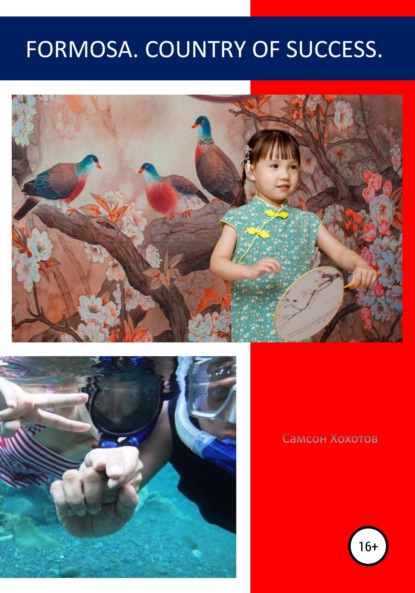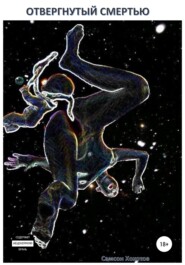По всем вопросам обращайтесь на: info@litportal.ru
(©) 2003-2024.
✖
Formosa. Country of success
Настройки чтения
Размер шрифта
Высота строк
Поля
There is a mention of a large pit, dug by the rebels in the north of the island and covered up with poles, turves and grass, into which they managed to lure a group of Dutch sailors.
The pit was then re-filled with earth and twigs. Ultimately the forces were unequal, the rebels crushed, and only the northern and southwestern regions of Taiwan remained under the control of the East India Company.
Fort San Salvador has not disappeared without a trace. And we owe this to archaeologists.
In the city of Jilong, a Spanish-Taiwanese expedition found Fort San Salvador, built during the Spanish occupation of Taiwan in 1626-1642. The researchers discovered some Neolithic artefacts, such as bones and shells, plus some items from later periods. A porcelain vial from the Qing Dynasty and which was intended for medicine particularly caught the
attention of the archaeologists. Due to the excavations, the previously planned construction of public parking lots has been discontinued, according to the Mayor of Jilong, Lin Yu-chan
. He noted that these archaeological excavations were very significant. “This is a truly exciting moment in the history of Jilong,” concluded the Mayor.
Arable farming, cattle breeding, crafts, hunting
Horticulture began to develop.
The most widespread crops were cereals (millet, rice), legumes (peas, various beans), and tuberous species (taro, sweet potatoes, yams).
The production of irrigated rice, sugar cane, onions and ginger increased throughout the 17
,18
, & 19
centuries with the crops being harvested twice per year.
The Dutch also introduced the local people to the technology of growing tobacco.
The communal fields were cultivated by women under the guidance of certain men who were known as the “elders of the
field”. In addition to this, every woman and every man worked on their plots.
Fishing, crab and oyster catching in the 17th century were exclusively women’s occupations, whereas in the 18 and 19th centuries it became men’s work. For fishing bows and harpoons were used and they set up nets and made dams. But the main occupation for men was hunting. They hunted singly and in groups. Sometimes hunters of 2 or 3 neighbouring communities could unite. They hunted collectively either with stakes and dogs or with the help of snares. The prey was divided-up in the following way: the hunters kept the heads, bones, horns and skins of animals, and the remainder of the meat among all residents. Domestic animals included pigs,
dogs and chickens. Some homeowners had cats. In the 19th century, horses were imported from China but were used only for riding. The food was usually cooked by women. A hearth was made of stones outside the house. Meat was rare on the table. The entrails of animals were salted and salt treatment was also used for unscaled fish. Salt was extracted by evaporating seawater in troughs. They ate with their hands, sometimes helping themselves with coconut shells. Starting from the 18th century, they began to use sticks and porcelain bowls.
Grains were ground using a mortar and pestle.
Rice, sweet potatoes and peas were spiced using red pepper. Fruit (bananas, oranges, persimmons) played a secondary role.
Beginning in the 3rd century, they used weapons made of deer antlers, whereas in the 16th century, they began to buy iron arrowheads and knives from the Chinese and daggers from the Japanese.
By the 17th century, they began to smelt iron and make weapons themselves.
Boats were hollowed out of wood. Bamboo was used to make vessels for storing grain and water. Often water was stored in gourds.
The Taiwanese were engaged in spinning, weaving and basket weaving. Bamboo fibres and hemp were used for weaving. Weaving was a man's business. Houses were built from bamboo on a loose foundation. The roof was covered with thatch. They climbed into the house by a ladder. Every five years the houses were demolished and new ones were built. Weapons, objects of labour and household items were all kept in the house. They slept on reindeer skins. Since the 19th century, wealthier people began to use beds. Cowrie shells, necklaces of coral, bamboo, stone, feathers and bone bracelets were all used for decoration. Hair was plucked-out at the temples. The tattoo symbolized affiliation with a particular tribe, clan or age group. Soot and madder plant sap were both used as paint.
Men got married at the age of 21. The groom's relatives engaged in matchmaking. It was necessary to present a gift to the groom's parents or the bride's girlfriends. In some communities, the bride and groom exchanged broken front teeth. Accepting the gift meant agreeing to the marriage. Economic ties were weak, and families easily broke up at the initiative of either side.
Violation of religious prohibitions was considered the most serious of crimes for which there was a fine in the form of rice, meat, skins or wine. Theft, murder, and adultery were considered crimes. In such cases, the custom of revenge was in effect.
The plaintiff and the defendant fought a duel. For his wife’s adultery, the husband took 2 or 3 pigs from the opponent. The Taiwanese worshipped the spirits of the mountains and the sea and sacrificed to them with meat and fish, sprinkling them with water. If a person died in battle the bodily remains were sacrificed to the spirits. The corpse was placed in a small hut, built on the branches of a tree, and shot at with bows or covered with a pile of stones into which a flag was placed.
As we can see, the cult of ancestors, fetishism, and animism was widespread among the tribes. The interpretation of dreams was also popular. The tribal pantheon had paired Deities. We believe that they symbolized both masculine and feminine principles.
The main Deities were Tamagisanchak – the god of rain, and Takarupada – the goddess of thunder, representing beauty and fertility.
Hamo and Pagatao were associated with a solar cult. All tribes believed in good and evil spirits of nature, semi-mythical heroes. The cult of human ancestors and the cult of plant ancestors were widespread. The agricultural cycle was associated with seven holidays accompanied by ritual libations and orgies.
In the 19th century, the funeral rites changed, the body of the deceased being interred without ceremony in an undesignated place. Some tribes preserved legends about the flood, after which the surviving brother and sister became husband and wife and many aborigines descended from them. In folklore, many stories were about shooting at the sun. This plot is reminiscent of the Chinese legend about the archer Yi, the sun and the moon pursuing each other and the immaculate conception, the emergence of agriculture, hunting, fishing, plants and animals.
Conquerors
Dutch Formosa existed until 1661. This year, the Dutch Fort Zeeland (Taiwan), headed by the Swede Frederick Coyett, capitulated to an army of refugees from China, who had
remained loyal to the overthrown Ming dynasty and led by Admiral Koxinga. Today Fort Zeeland is part of the Anlin district of Tainan.
At that time, Taiwan was called Dongning. Under Koxinga and his descendants, the Chinese population of Taiwan (or the so-called then Dongning increased to 200,000 people.
Supporters of Zheng Chenggong created an independent state on the island to fight the Manchus. The latter at this time overthrew the Ming dynasty in China and established their own
Qing dynasty. Subsequently, it took the Manchus 22 years to subdue Taiwan to the Qing dynasty emperors in 1683 following an economic blockade and with the help of
the Dutch. The island, in 1683, was included in the Chinese province of Fujian.
The eastern shores of the island remained uninhabited throughout the 18th century. In the 19th century, Amoy traders sowed the entire territory of Taiwan with rice and tea that they mainly exported to Japan.
The 1842 census showed that Taiwan had 2.5 million inhabitants.
May and June of 1874 marked the so-called Taiwan campaign – the Japanese military operation on the island of Taiwan, which was then under the sovereignty of the Qing dynasty. The campaign was a reaction to the killing of
Japanese nationals (the Ryukyu State trading junk team) by Taiwanese aborigines. Japanese troops managed to capture the southern part of the island and demanded that the Qing dynasty assume responsibility for the killings.
Great Britain held the role of intermediary, and Japan withdrew its troops in exchange for the payment of reparations by the Chinese.
Shipwrecks were not uncommon off the southern coast of Taiwan and led to the growth of sea robberies, acts of piracy restricted to attacks on ships washed ashore or stopped in calm waters near the coastline.
In Taiwan, which by 1871 was under the sovereignty of the Chinese Qing dynasty, a diplomatic incident took place. Residents of Taiwanese tribes of the Mudan village killed 54 Japanese fishermen from the Miyakojima island of the Ryukyu
archipelago.
In Taiwan, which by 1871 was under the sovereignty of the Chinese Qing dynasty, a diplomatic incident took place. Residents of Taiwanese tribes of the Mudan village killed 54 Japanese fishermen from the Miyakojima island of the Ryukyu archipelago.
The fishermen were accidentally washed ashore by a wave to the southeastern coast of Taiwan.
The main instigators of the massacre were natives from the Kuarut and Bo-otang tribes.
The 12 surviving crew members were rescued by the Chinese and taken to Taiwan, from where they were handed over to Fujian officials. Later, by agreement, they were sent home.







